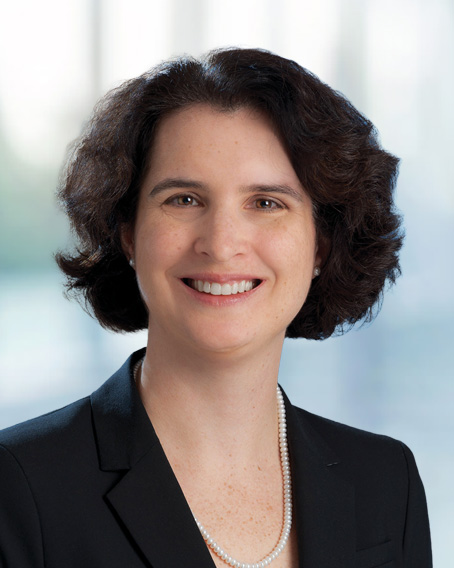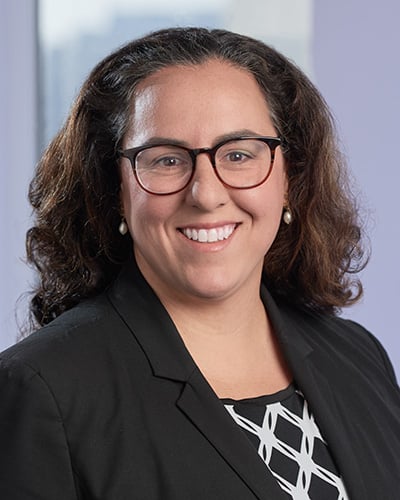In this Ropes & Gray podcast, finance partner Patricia Lynch and counsel Patricia Teixeira discuss the recent fraud case involving JES Global Capital and its subscription facility. They provide their insights on the diligence banks conduct prior to putting subscription facilities in place, and whether or not we can expect any change in such procedures in light of the case discussed.
Transcript:
 Patricia Teixeira: Hello, and thank you for joining us today on this Ropes & Gray podcast. My name is Patricia Teixeira, and I am a counsel in the New York office of Ropes & Gray in the finance practice group. Joining me today is Patricia Lynch, a partner in our finance group in Boston. We both spend a significant portion of our time advising private investment funds on subscription facilities and other types of fund financing.
Patricia Teixeira: Hello, and thank you for joining us today on this Ropes & Gray podcast. My name is Patricia Teixeira, and I am a counsel in the New York office of Ropes & Gray in the finance practice group. Joining me today is Patricia Lynch, a partner in our finance group in Boston. We both spend a significant portion of our time advising private investment funds on subscription facilities and other types of fund financing.
Those involved in the fund finance industry have certainly seen the recent headlines of an alleged fraud involving a well-known U.S. bank and a Florida-based private equity fund manager, JES Global Capital. The allegations claim that the fund manager forged subscription agreements from two investors totaling $85 million. The manager has also allegedly fabricated bank records showing wire transfers from these two institutions and an audit letter attesting to the financial health of the fund. The fraud left the lender with a $70 million exposure backed by fabricated commitments. In today’s podcast, we will be focusing on the diligence banks conduct prior to putting in place subscription facilities, and whether we can expect any change in such procedures in response to the JES case. Patricia, to start us off, could you provide us with an overview on what subscription facilities are and why they might be of interest to fund managers?
 Patricia Lynch: Sure, Patricia. Subscription facilities, which are sometimes called capital call facilities, are revolving lines of credit that are available to certain funds, including private investment funds and credit funds, and that are secured by the unfunded capital commitments from the fund’s investors. Banks lend money to the fund based on a borrowing base of uncalled commitments. The borrowing base under these facilities goes down over time as the fund calls capital to fund its investments. Fund managers use subscription facilities for a number of reasons. First, these facilities can give funds flexibility to close investments on short notice without having to wait to receive proceeds of a capital call from investors. This flexibility helps to reduce execution risk and gives the fund a competitive advantage relative to other potential buyers who cannot close a transaction as quickly. In addition, it allows a fund to reduce the number of capital calls it makes to investors by allowing the fund to bridge expenses between calls. Investors generally prefer fewer capital calls, as this increases predictability and reduces the amount of cash that they need to keep on hand in the event of an unexpected capital call. These facilities also came in handy during the early months of the COVID-19 pandemic as a way for fund managers to access liquidity to inject cash into stressed portfolio companies.
Patricia Lynch: Sure, Patricia. Subscription facilities, which are sometimes called capital call facilities, are revolving lines of credit that are available to certain funds, including private investment funds and credit funds, and that are secured by the unfunded capital commitments from the fund’s investors. Banks lend money to the fund based on a borrowing base of uncalled commitments. The borrowing base under these facilities goes down over time as the fund calls capital to fund its investments. Fund managers use subscription facilities for a number of reasons. First, these facilities can give funds flexibility to close investments on short notice without having to wait to receive proceeds of a capital call from investors. This flexibility helps to reduce execution risk and gives the fund a competitive advantage relative to other potential buyers who cannot close a transaction as quickly. In addition, it allows a fund to reduce the number of capital calls it makes to investors by allowing the fund to bridge expenses between calls. Investors generally prefer fewer capital calls, as this increases predictability and reduces the amount of cash that they need to keep on hand in the event of an unexpected capital call. These facilities also came in handy during the early months of the COVID-19 pandemic as a way for fund managers to access liquidity to inject cash into stressed portfolio companies.
Patricia Teixeira: Thanks, Patricia. Subscription facilities have also been an attractive product for lenders because of their relative stability. It’s not surprising that the fund finance industry has grown significantly over the past decade. These facilities are perceived as low-risk investments for lenders given the creditworthiness of the investor base the banks are lending against. These loans are also by definition over-collateralized since the lender only advances up to a certain percentage of uncalled capital. In addition, partnership agreements have hefty penalties for investors that fail to fund their capital commitments. This all leads to a market in which there have been virtually no defaults, even during the worst periods of market dislocations. I would expect that both from the fund manager side and the lender side, there will continue to be a strong desire to ensure the stability of this market going forward. Can you talk a bit about how these facilities are structured from a collateral perspective and how the alleged fraud might affect lender’s potential recovery?
Patricia Lynch: Sure. A key structural characteristic of these facilities is the indirect nature of the credit and source of repayment, which depends on the investors honoring their capital commitments to the fund. As mentioned, subscription credit facilities are secured by the unfunded commitments of the investors in the fund, the right of the fund to call capital and to receive capital contributions from its investors. In addition, lenders also have a pledge of the bank account into which the capital contributions are funded. Lenders’ diligence includes the fund and the fund manager, as well as the investors. A key portion of the lenders’ diligence is the review of the fund’s documentation. The bank will review the limited partnership agreement, the subscription documents and any side letters to ensure that investors’ obligations to fund capital once called by the general partner are enforceable. They will also look for specific language that allows the bank to step into the shoes of the general partner and call capital from the investors if there is a default under the facility. What is important to note is that all investors’ obligations run in favor of the fund. Since, generally speaking, the investors do not guarantee the facility, there is no direct contractual privity between the lender and the investors. There are some exceptions to this general rule. Investor letters, for example, were historically common, but now are no longer part of the usual documentation since lender protections are largely included in the Partnership Agreements. That said, in funds of one, you often see the bank ask an investor to sign an investor letter that includes an acknowledgement by the investor of the facility and the pledge by the fund of its right to call capital. This letter creates a contractual link between the bank and the investor. Lenders might require investor letters in highly concentrated funds as well. Investor letters are different from comfort letters, which we see when an investor structures an investment in the fund via an unrated subsidiary, in which case the bank might require a comfort letter from the parent company in order to underwrite such investor based on its parent creditworthiness. Comfort letters are short of full guaranties, but from the bank’s perspective, they are helpful to evidence the ownership structure between the creditworthy entity providing credit support and the investor who has the direct obligation to the fund—they usually don’t include enforceable contractual obligations against the parent.
Patricia Teixeira: So if we leave funds of one aside for a moment, are there other protections already in the documents in the market today that could limit lenders’ exposure to say a fraudulent commitment as we saw in JES?
Patricia Lynch: There are several ways banks seek to minimize their exposure. One is by excluding from the borrowing base any investors that do not meet certain criteria that the bank deems necessary for being able to fund its commitments under the partnership agreement (for example, minimum credit ratings or a minimum net worth). A bank can also set concentration limits on the amount that any single investor’s commitment could account for the borrowing base. Another construct that we’ve seen is to require that investors representing more than a certain percentage of the borrowing base deliver investor letters. These are all different ways in which the bank can limit its exposure to any particular investor.
Patricia Teixeira: Do you think that banks may broaden the scope of these exclusion events or increase requirements for providing the investor letters you mentioned in light of the recent case?
Patricia Lynch: That will be an interesting development to track. There were business reasons for the phase out of investor letters as the use of subscription facilities became more prevalent. While banks are interested in getting as much comfort as they can directly from investors, fund managers consistently receive pushback from their investors on these requirements. In order to resolve this tension, fund formation attorneys draft limited partnership agreements with these lender asks in mind to pre-bake any negotiations between investors and the banks into the partnership agreement. It is not uncommon, for example, for partnership agreements to require investors to deliver to the lender, upon request, a written confirmation of their capital commitments to the fund. So we may see lenders requesting these written confirmations more frequently, particularly from investors with significant commitments and for commitments to less established funds.
Patricia Teixeira: As a commercial matter, one question that comes to mind is: Couldn’t the banks just price the risk into the facility?
Patricia Lynch: They could, but as previously mentioned, these facilities are attractive to banks because of their otherwise low-risk profile. The value proposition that banks offer to get these types of facilities in their portfolio is largely dependent on how the facilities are priced. Since this is a relationship business, I would find it surprising for lenders to increase pricing on their blue chip clients. That said, it would be reasonable to expect an increase in pricing or a limitation on the facility size for newer or less established funds. Another economic term that banks could use is to create a borrowing base increase checkpoint, where the borrowing base increases upon the funding of a certain amount of commitments. This would serve two functions—it would ensure that the investor has enough “skin in the game,” but would also give the bank the opportunity to verify investors’ prior wire transfers. Similarly, banks could require an initial capital call to be made within a short period of time after closing, before the fund can fully access the facility. Another approach that banks may take to reduce their risk is an annual “clean-down” requirement, which requires the borrower to pay down the facility to zero for a number of days each year.
Patricia Teixeira: So is it fair to say that, while there are some economic steps that banks could take to protect themselves from potential fraud risk, they might be more likely to rely on existing frameworks that the industry is already familiar with and maybe increase some spot checks?
Patricia Lynch: I think so. I think it’s premature to say this will have a sweeping effect on the industry in particular for more established funds. In my opinion, banks are likely to still see this as a very low-risk product. You might remember that this is only the second time that there’s been a fraud case in this industry—the first one being the Abraaj case in 2018, which did not involve a U.S. facility. That case did not have a major impact on how these agreements are negotiated. Unfortunately, there is a fraud risk inherent in any transaction and there’s only so much a lender can do if it encounters a truly ill-intentioned fund manager. At the end of the day, this is a relationship business with repeat players, so that alone should provide a bit of comfort for lenders moving forward. Banks also use fund finance as an entry point for other businesses with the fund, so if all is going well, the subscription facility will not be the only point of contact between the bank and the fund. The more points of contact there are, the less likely it is that a fraud will go unnoticed.
Patricia Teixeira: I agree. Some other ideas I’ve heard floating around are, for example, requiring the delivery of investor notices for all funds whether or not required for perfection, similar to what is currently done for perfection purposes with respect to Cayman funds—that would make a fraud more difficult to accomplish. Some banks already require that collateral accounts be capped with a lender. Maybe we will see more banks insisting on that so they have yet another point of contact with the fund. I would not be surprised if banks are also looking at their KYC processes to confirm they are up-to-date. I think this case reminds us all of the importance of diligence, KYC, and good internal controls and monitoring mechanisms. I can also envision another layer of review when it comes to investor documents. When a particular investor is crucial to the borrowing base, you could imagine banks asking for a legal opinion from investor’s counsel on the authorization and execution of the subscription documents and, if applicable, the investor letter. That does not solve entirely for fraud, but adds yet another layer of review. Speaking of investors, although LPs might not appreciate constant checks from lenders, there is something to be said for the stability of the industry that might benefit investors as well. Do you agree?
Patricia Lynch: That’s right. Although the conversation to-date seems to have focused on the impact to lenders and fund managers, LPs also have an interest here. Since most partnership agreements require investors to fund capital calls without set-off, counterclaim or defense, in a scenario such as the one discussed in the case above, legitimate limited partners might be on the hook for repayment to the lenders of any amount borrowed by the fund up to their own commitments.
Patricia Teixeira: We will continue to monitor the market to see how lenders respond in the next few weeks and months. Well, thank you, Patricia, for joining me today for this discussion. And thank you to our listeners. For more information on the topics we’ve discussed today, or other topics of interest to private funds or institutional investors, please visit our website at www.ropesgray.com. And of course, if we can help you navigate any of these areas, please do not hesitate to contact any of us. You can also subscribe and listen to other Ropes & Gray podcasts wherever you regularly listen to podcasts, including on Apple, Google and Spotify. Thanks again for listening.
Speakers
Stay Up To Date with Ropes & Gray
Ropes & Gray attorneys provide timely analysis on legal developments, court decisions and changes in legislation and regulations.
Stay in the loop with all things Ropes & Gray, and find out more about our people, culture, initiatives and everything that’s happening.
We regularly notify our clients and contacts of significant legal developments, news, webinars and teleconferences that affect their industries.




